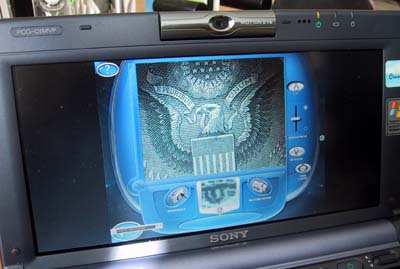
Check if that is a piece of corn grit or moth larvae in the old box of corn meal in the pantry.(This is especially fun as you can take pictures so the child can see a comparative sequence.) Check to see if that’s a piece of lint in your child’s hair or a nit.(This generated two doctors visits in my household.) Check to see if that brown spot is a freckle, age spot, or possible carcinoma.
#Digital blue qx5 microscope not responding skin#
Salt crystals, piece of ice teeth: puppy, kitten, or human cross section of celery stalk, also slices of apple, potato other foods with interesting textures cross section of celery stalk that has soaked up some food color cocoon, larvae, or pupa tadpole rocks: obsidian vs sandstone, quartz variety of soil samples electronic circuits, print cartridge head, old hard drive, something that has been inkjet printed fungi: underside of mushrooms, mold on bread or cheese rolly bug, moth eggs, section of cobweb peeling skin or a scab variety of seeds the parts of a plant: stamen, pistol, pollenĪnd lest that not convince you, here are Six Practical Uses for a Digital Microscope In case you're scratching your head, wondering what, exactly, you could do with such a techno-gadget, here are some ideas for things to look at with a digital microscope: Kathy Ceceri was written up by the NYT for her adventures with digital microscopes, You can read more about her thoughts on her Digital Blue QX5 Digital Microscope here. Jenny Williams also has a Celestron but, the Deluxe LCD version. A couple of other GeekMoms have digital microscopes and have been very happy with them. The good news is, there are lots of other microscopes out there-most cost more-but that will have a more sophisticated ability to utilize these higher magnifications. And I'm not convinced ANY of them came close to the 150X magnification that was reported with the instrument. The snakeskin was probably one the more satisfying close ups, but the magnification wasn't THAT much better at the higher setting. Here is a picture of the reptile jaw next to a ball point pen for comparison, and then at a higher magnification of where the teeth met the jaw. This higher magnification on the whale bone was a little more acceptable, although you were still at the whims of what piece of the specimen fit inside the plastic guard ring.Īnother drawback was that you weren't able to know precisely which magnification level you were using. The microscope would focus (more or less) on one spot and magnify that, but not very satisfyingly. I could never get a satisfactory close up of this rock. Here are some side by side comparisons of the larger magnifications we tried to get. But there is a plastic ring/protector thing around the lens so that many times you couldn’t get the specimen close enough to take advantage of the higher magnifications. ) You had to mush the specimen up close to the lens and wiggle it around, hoping some part of it would come into focus. After working with it for hours, these were the highest magnifications I could achieve, and those were highly awkward and wobbly. Which, sadly, brings me to one of its cons: I would have to say that this particular microscope did fairly poorly at its higher magnification power. In fact, that is one of this digital microscope’s huge pros: it acts as more of a hyper-magnifier and can therefore be used on all sorts of things. That’s because the specimen doesn’t have to be translucent. You’ll notice that a number of the things you can look at with a digital microscope wouldn’t work under the older microscopes. And my husband, being the saint that he is, gave it over to me for the next few weeks. So imagine my surprise-and delight-when passing my husband’s desk a few weeks ago and seeing a huge picture of some metal scoring on his computer screen-and it was moving! Lo and behold, he was looking at it through an instrument he held in his hand: a digital microscope. Okay, so part of it may have been my fault in that I’m not the most manually dexterous of people, but still… Then there was the slide preparation! Holy cow! The super thin slide covers broke so easily. You had to get the light just right, and tilt the mirror at precisely the correct angle.



I blame it on the microscope itself, frankly. And while I ended up becoming both a mother and an avid reader (and writer!) I did not follow the trail of the microscope into the science field. I know-it sounds like one of those standardized test questions: Which of these three is not the same-but there you go. One Christmas, in a moment of perfect parental insight, my mother got me a Madame Alexander doll, a copy of The Little Princess by Frances Hodgson Burnett, and a microscope.


 0 kommentar(er)
0 kommentar(er)
